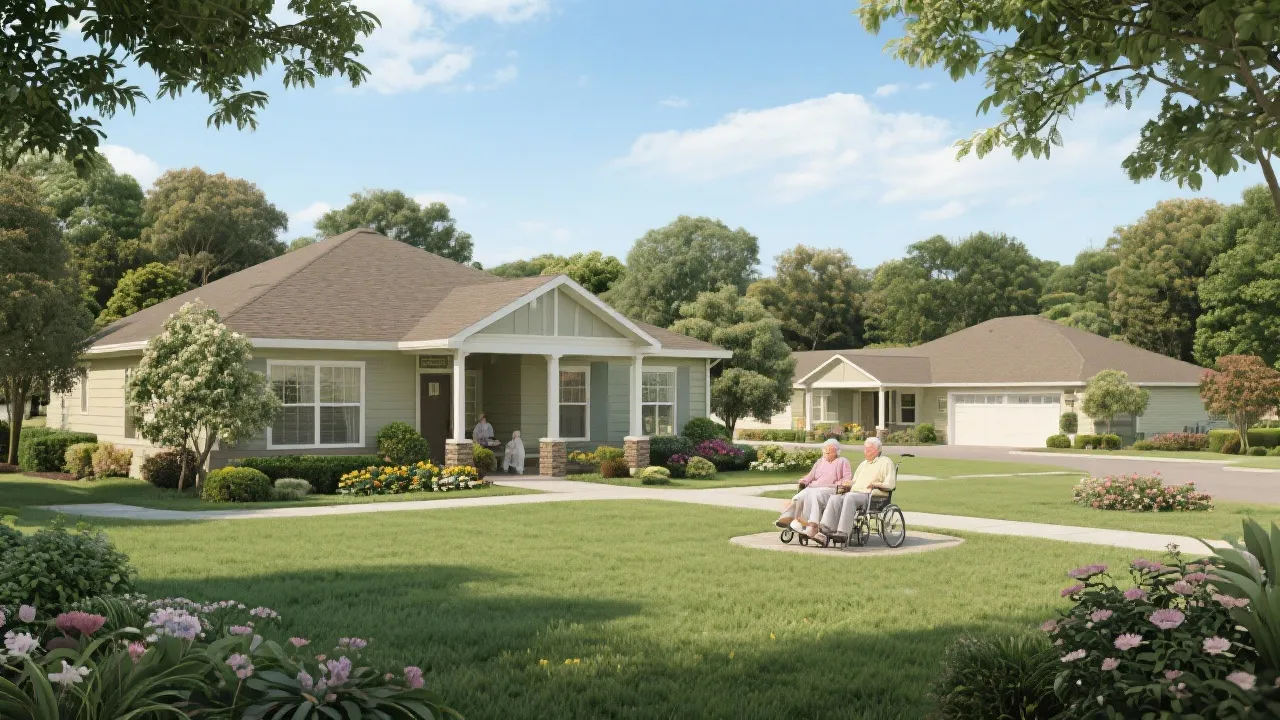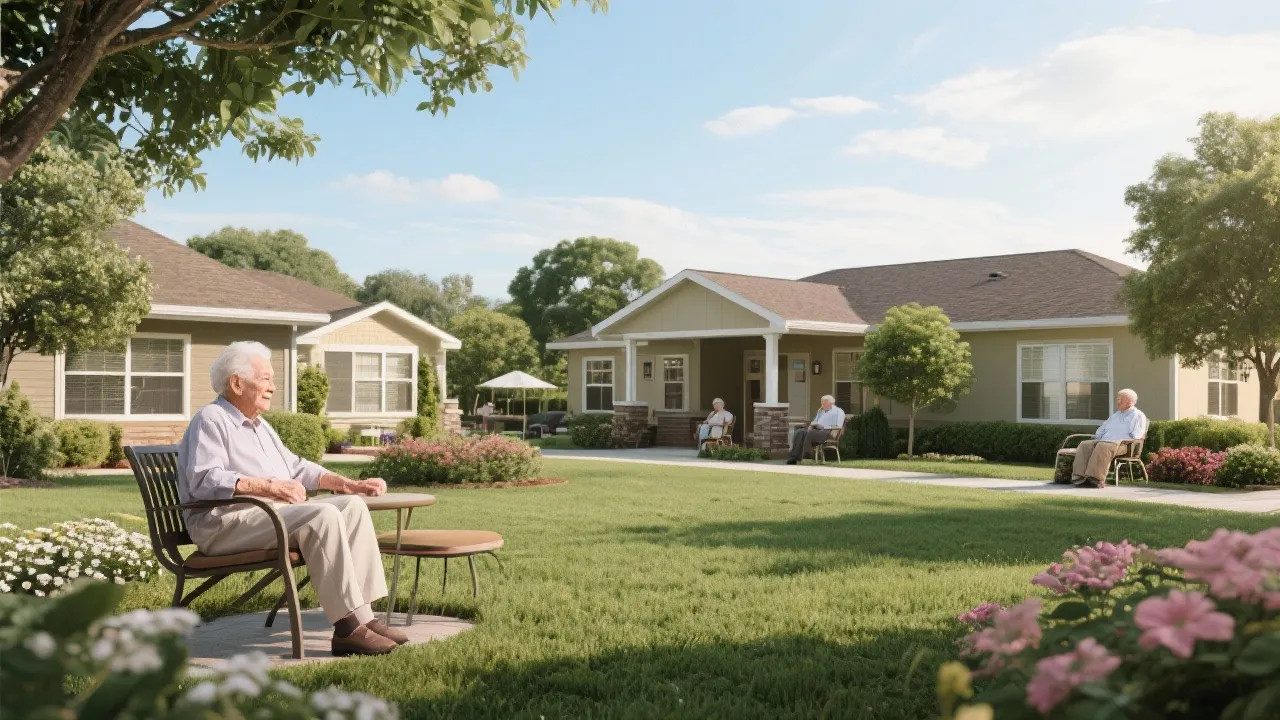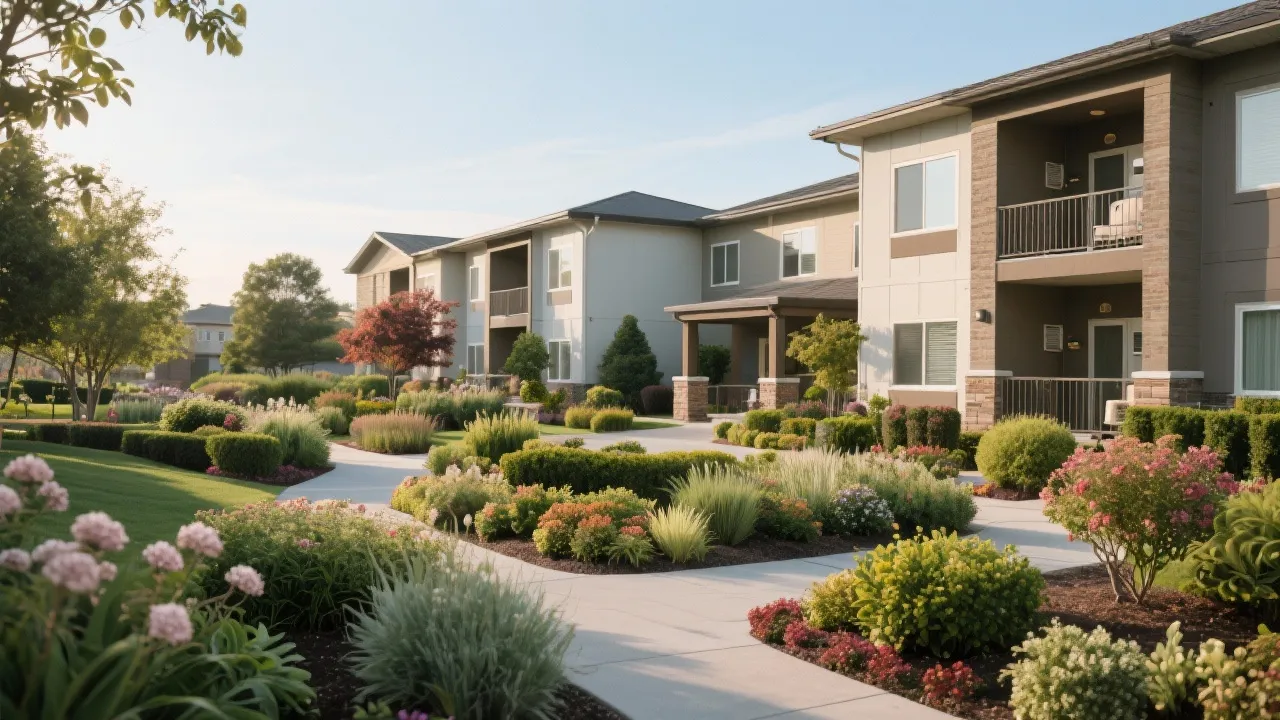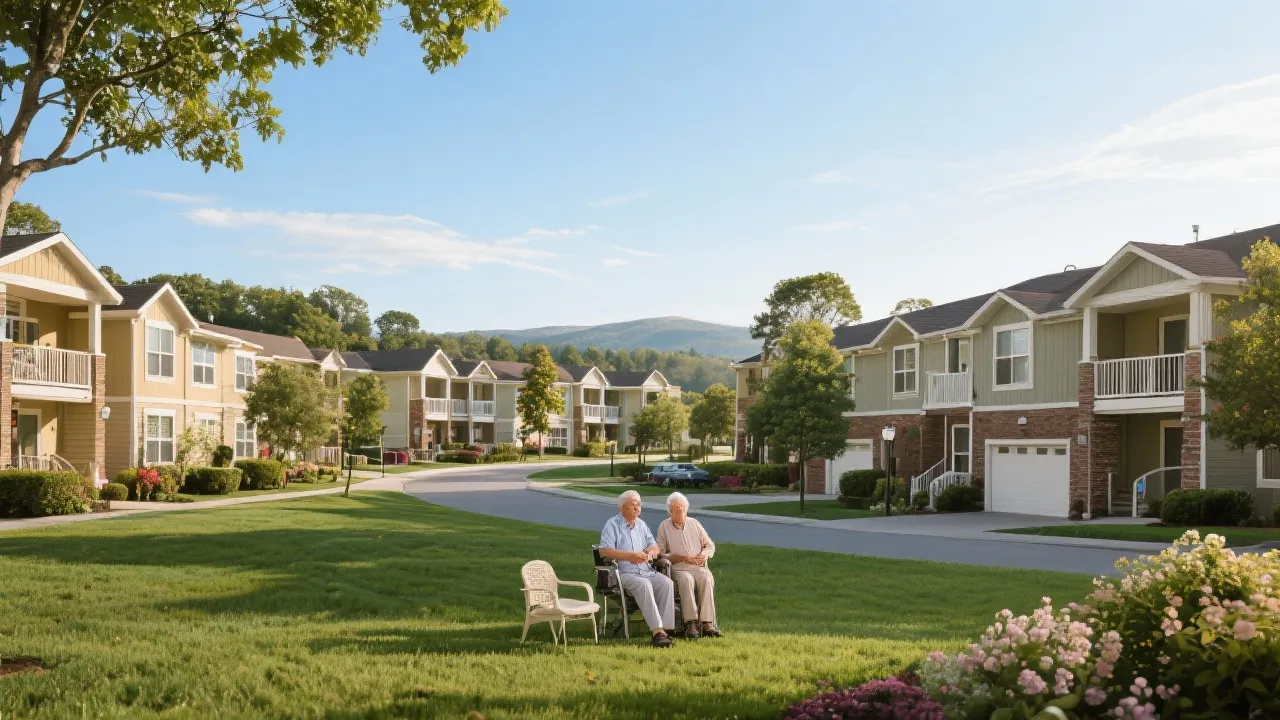Discovering Income-Based Senior Living
This guide delves into the nuances of income-based senior living communities, offering a comprehensive analysis for those seeking affordable options nearby. With the rising demand for such housing, it is crucial to explore available resources that guide seniors in finding suitable living arrangements. Objective statistics, sources, and industry insights are highlighted within the senior housing domain.
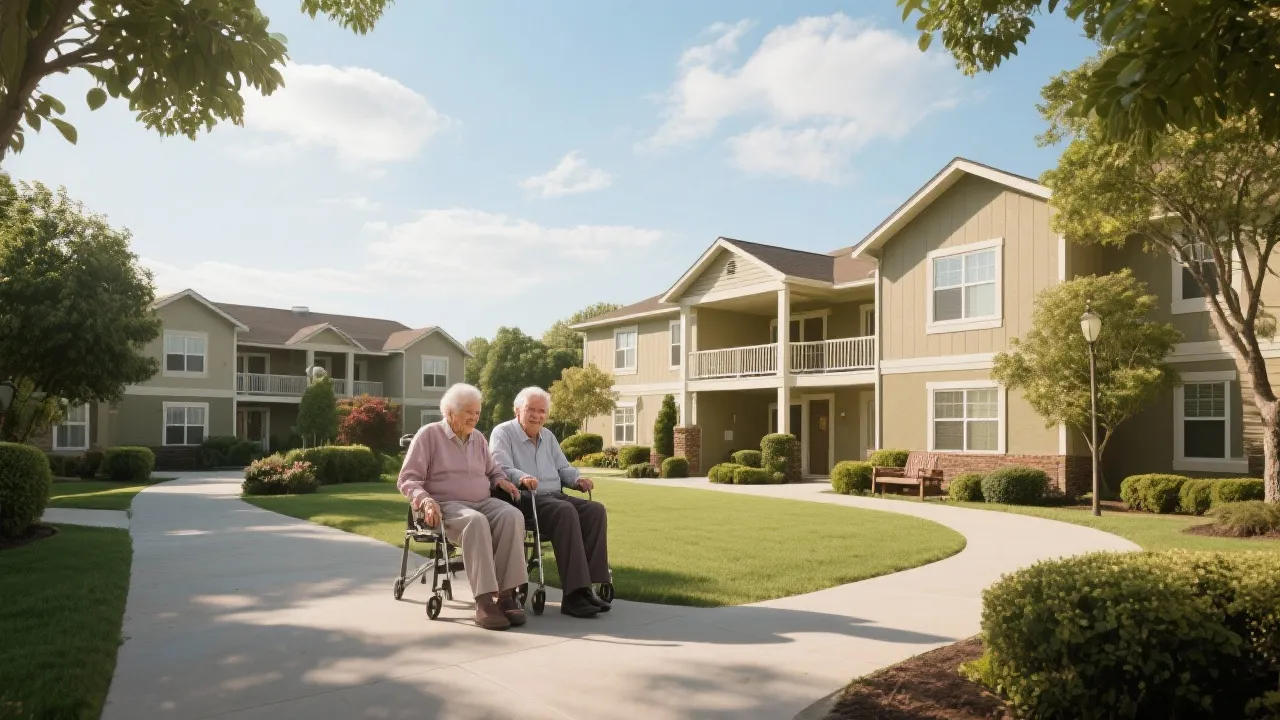
Introduction to Income-Based Senior Living
As populations in English-speaking countries like the United States, the United Kingdom, and Australia continue to age, there is a mounting demand for affordable senior housing. With the baby boomer generation entering their retirement years, the need for suitable living arrangements that cater to the unique circumstances of seniors is more pressing than ever. Income-based senior living options provide a practical solution for seniors and their families seeking to balance financial and lifestyle needs. This article explores the world of income-based senior living, offering an insight into what such living arrangements entail and guiding you through available resources for finding facilities nearby. We will delve into the different types of income-based senior living, the benefits they offer, and provide important considerations when making the transition to a senior living community.
Understanding the Concept
Income-based senior living is designed to cater to individuals or couples over the age of 55 who fall within specific income brackets. These communities offer affordable rental options for seniors, balancing reduced financial obligations with a comfortable living environment. The defining feature of income-based senior living is that it provides access to lower-cost housing through various assistance programs or income qualifications. Depending on various factors, these establishments can include independent living, assisted living, and in some cases, memory care.
Independent living facilities are tailored for seniors who are mostly self-sufficient but may require some assistance with daily activities. Here, residents typically have their own apartments within a community setting that encourages social interaction while offering a place to call home. On the other hand, assisted living facilities are meant for seniors who may require help with day-to-day tasks such as bathing, dressing, or medication management. Memory care facilities specialize in providing structured support for seniors with Alzheimer’s or other forms of dementia, ensuring their safety while providing stimulating activities to engage them.
The Importance of Community and Lifestyle
One of the most compelling aspects of income-based senior living is the sense of community it fosters. For many seniors, moving into a facility can alleviate feelings of isolation and loneliness that may come with aging. These communities often organize activities ranging from exercise classes and educational workshops to social events and outings, promoting interaction among residents.
The lifestyle in income-based senior living communities can significantly enhance the quality of life for seniors. Many facilities provide amenities such as fitness centers, libraries, communal gardens, and art studios. Additionally, meals are often provided, with nutrition-focused options that cater to the dietary needs of older adults. With a focus on wellness and health, many income-based senior living options also offer wellness programs that encourage physical activity and mental health support, crucial aspects of maintaining an overall healthy lifestyle. Ultimately, the aim is to create environments where seniors feel not only safe but also empowered and connected.
Resources for Senior Housing
Various organizations provide invaluable resources for those exploring income-based senior living. AARP is a notable entity offering extensive guides on choosing the right senior living option, catering to independent living, assisted living, and memory care. For a detailed directory of senior living communities, SeniorLiving.org presents comprehensive information on pricing, amenities, and differing types of care across the U.S.
In addition to these major resources, local Area Agencies on Aging (AAA) can also provide valuable information and assistance. These agencies can help connect seniors to local services, such as Medicare and Medicaid assistance, transportation options, and even help with finding nearby housing that meets their financial requirements. The National Council on Aging is another excellent resource that advocates for the elderly and provides information about benefits that seniors can access, which can allow them to live comfortably within income-based facilities.
| Organization | Key Offering | Link |
|---|---|---|
| AARP | Guides on senior living options | AARP |
| SeniorLiving.org | Directories and information on senior living | SeniorLiving.org |
| National Council on Aging (NCOA) | Senior benefits resources and advocacy | NCOA |
| Area Agencies on Aging (AAA) | Local services for senior assistance | N4A |
Source: AARP, SeniorLiving.org, NCOA.
Cost Insights for Rentals in English-Speaking Countries
Understanding the cost structure is crucial for financial planning in income-based senior living. The price range for rentals in these countries varies significantly based on the city type and amenities offered in senior living communities. For example, rental prices tend to be higher in metropolitan areas where the cost of living is elevated. Many income-based facilities provide tiered pricing structures based on the level of care required — a crucial factor for families when selecting a living arrangement that suits both their needs and budgets.
Below is an overview of expected rental costs across different types of cities:
| Country | City Type | Price Range |
|---|---|---|
| United States | Large cities | Approximately $2,000 - $4,000 per month |
| United States | Smaller cities | Approximately $1,000 - $2,000 per month |
| United Kingdom | Large cities like London | Approximately £1,500 - £3,000 per month |
| United Kingdom | Smaller cities | Approximately £800 - £1,500 per month |
| Australia | Large cities like Sydney and Melbourne | Approximately AUD 2,000 - AUD 3,500 per month |
| Australia | Smaller cities | Approximately AUD 1,200 - AUD 2,000 per month |
Comparative Analysis of Income-Based Senior Living Models
When examining income-based senior living options, it is important to note how these models differ not only by country but also by the type of care and availability of resources. In the United States, the Department of Housing and Urban Development (HUD) plays a significant role in overseeing income-based housing programs, including Section 8 vouchers and other subsidized housing programs. This governmental support helps bridge the affordability gap, making senior living options more accessible.
Conversely, in the United Kingdom, the Care Quality Commission (CQC) regulates care provided in various senior living settings across England. The CQC’s role is crucial in establishing quality benchmarks for care and services, ensuring that seniors are provided with the highest standard of living accommodations. This varies from state to state in the U.S., where regulations can differ, leading to inconsistencies in available services and the care provided.
In Australia, aged care assessments determine eligibility for various financial supports, including residential care. Understanding these processes can be overwhelming for seniors and their families, making it crucial to seek assistance from a knowledgeable advisor or social worker who understands the nuances of these systems. These experts can guide families through the intricacies of financing options, ensuring that seniors find the best living arrangements for their needs.
FAQs on Income-Based Senior Living
What are the main benefits of income-based senior living? Income-based senior living offers a range of advantages, including affordability, a sense of community, and a variety of services tailored to senior lifestyles. They often promote social interaction, which can be particularly beneficial for emotional well-being, and emphasize independence accompanied by support from trained staff.
How can I qualify for income-based senior living? Qualifications generally include being over a certain age, usually 55 or older, and meeting specific income criteria that vary by location and facility. Some facilities may require documentation of income and assets, while others may have streamlined processes that allow immediate assistance. Understanding these requirements before applying can reduce delays and help streamline the transition process.
Are there any resources to aid in the transition to senior living? Yes, the National Association of Senior Move Managers (NASMM) connects seniors with professionals who assist with the logistics of moving to a senior living community. These professionals can help manage the complexities of downsizing, sorting belongings, and settling into a new home, which can be a daunting task for many seniors and their families. Additionally, many communities offer orientation programs for new residents to help them acclimate to their new environment.
How does one find services that cater to specific needs? Seniors may have specific healthcare or lifestyle needs, and many income-based living facilities offer tailored services. It is advisable to research and tour various facilities, inquire about specialized care programs, and ask about staff qualifications. It’s also beneficial to seek language interpreters or guides to ensure all questions and concerns are communicated effectively. Reviews from current residents and family members can offer insights into the quality of services offered.
Understanding the landscape of income-based senior living can empower those navigating this critical life stage. Utilizing the below resources, seniors and their families can make informed decisions about senior living near them:
Reference links:
- AARP
- SeniorLiving.org
- NSCLC
- NASMM
- National Council on Aging
- National Association of Area Agencies on Aging
Disclaimer: 1) The above information is sourced from online resources and reflects data as of October 2023. 2) For the very current information, please refer to the official websites provided.
The Future of Income-Based Senior Living
As the world faces unprecedented demographic changes, the focus on income-based senior living is likely to intensify. With advancements in technology and care practices, future communities may integrate smart technologies that enhance residents’ safety and well-being. Innovations such as telehealth services can enable seniors to access medical care without leaving their homes, while smart home features can assist with day-to-day living, allowing seniors to maintain independence longer.
Furthermore, governments and organizations may improve funding models for income-based senior living, creating more opportunities for affordable housing solutions. Discussions around better legislative support for aging populations are ongoing in many countries, emphasizing the necessity of comprehensive care options for seniors. As more people realize the importance of prioritizing their later years, there’s hope for a future that offers supportive, sustainable, and affordable living environments for seniors.
Ultimately, the future of income-based senior living is tied to societal attitudes toward aging and the resources dedicated to addressing the complex needs of older adults. It remains crucial for families and individuals to engage with policymakers and advocates to ensure that the needs of seniors are met and that they have access to dignified and equitable living conditions throughout their golden years.





